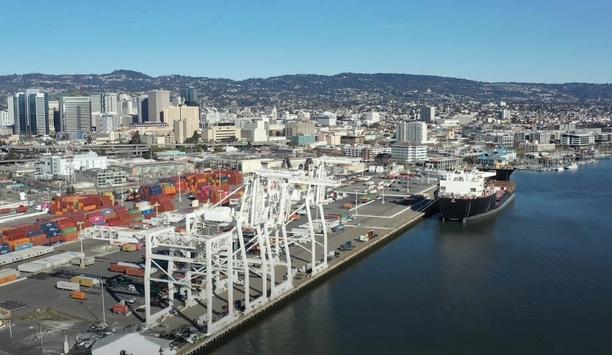This year has been characterised by uncertainty and extraordinary strain, which has fallen heavily on all manner of key workers. Alongside our celebrated healthcare professionals, carers and the emergency services, those working in essential retail have proved themselves to be the backbone of our society during this challenging period.
As people try to grasp onto normality and cope with the unexpected changes taking place in every aspect of their lives – including the way they are allowed to shop – it’s no surprise that tensions are now running higher than ever. Retail crime was already on the rise before the pandemic struck, with the British Retail Consortium finding that at least 424 violent or abusive incidents were reported every day last year. The Co-op recently reported its worst week in history in terms of abuse and antisocial behaviour, with 990 incidents of antisocial behaviour and verbal abuse suffered by staff between 20th and 26th July.
990 incidents of antisocial behaviour and verbal abuse suffered by staff between 20th and 26th July
To manage the increased risks currently faced by retail employees, businesses must adopt new initiatives to safeguard their staff. Growing numbers of retailers including the Co-op and Asda have equipped their in-store and delivery staff with body worn cameras to enhance safety and provide them with peace of mind, as well as to discourage altercations from taking place at all.
Traditional tech
Body worn cameras are nothing new and have been used within the law enforcement industry for years. Traditional devices are record-only and can be used to record video evidence able to be drawn upon ‘after the fact’ should it be needed as an objective view of an event and who was involved.
These devices can also be used to discourage violent or verbally abusive incidents from occurring in the first place. If a customer is approached by an employee, they are likely to think twice about retaliating if they know their interaction is being recorded. This stance is supported by research from the University of Cambridge that found the use of body worn cameras improves the behaviour of the wearer and those in its vicinity, as both are aware of the fact it can act as an objective ‘digital witness’ to the situation.
However, record-only body worn cameras do leave much to be desired. In fact, the same University of Cambridge study found that, in the case of law enforcement, assaults against officers wearing these devices actually increased by 15%. This could be attributed to those being recorded being provoked by the presence of the camera or wanting to destroy any evidence it may hold.
Out with the old, in with the new
Live-streaming enabled body worn cameras provide the benefits of record-only devices and more
Fortunately, there is a better option. Live-streaming enabled body worn cameras provide the benefits of record-only devices and more. Live-streaming capabilities are able to take ‘after the fact’ evidence one step further and provide the wearer with ‘in the moment’ safety and reassurance. With these devices, if a retail employee is subject to a volatile situation with a customer, they can trigger live video to be streamed back to a central command and control room where security officers will be able to take the most appropriate course of action with heightened and real-time situational awareness. Having access to all of the information they could need instantly will enable security personnel to decide whether to attend the scene and diffuse the situation themselves or to take more drastic action if needed, before any harm has been caused.
This capability is especially valuable for lone workers who don’t have access to instant support – such as delivery drivers, in-store or warehouse staff and distribution operators to name a few. The pandemic has also doubled the number of consumers who do their regular grocery shopping online, leading to potential supply and demand issues resulting in unhappy customers.
Live-streaming body worn cameras rely on uninterrupted mobile connectivity to excel, as they are not connected to any physical infrastructure. To minimise the risk of the live video stream buffering or freezing – a real possibility for delivery drivers who can be working anywhere in the country – retailers should look to deploy devices capable of streaming in real-time, with near zero latency footage, even when streaming over poor or constrained networks. To get the most out of their tech, retailers should also look to implement devices that can be multi-use and can be deployed as a body worn camera or a dashcam to record any incidents that may occur whilst driving.
Novel threats
This year brought about a new threat that retailers must protect their staff from
While not to the same extent, retail workers have always been subject to a level of potential physical or verbal abuse. However, this year brought about a new threat that retailers must protect their staff from. The COVID-19 pandemic has been the cause of many of the new threats facing employees, but is also a threat in itself. To mitigate this, retailers should look to introduce remote elevated temperature detection cameras in their stores, which analyse body temperature and sound an alarm when somebody’s temperature exceeds a certain threshold – as this could indicate the presence of a potential fever. When deployed on the same cellular network as live-streaming enabled body cameras, these tools can be linked to a central command centre and the alarms viewed remotely from any connected device. This means a network of cameras can be monitored efficiently from a single platform.
Ensuring the protection and security of retail workers has come to the fore this year. With the risk of infection in high-footfall locations, such as supermarkets, and the added pressure that comes with monitoring and enforcing safety guidelines, retail staff are having to cope with a plethora of new challenges. Retailers should adopt innovative technologies within their stores and delivery trucks, such as live-streaming enabled body cameras and remote elevated temperature screening solutions, to minimise the threat faced by their employees and provide them with instant support and reassurance should it be required.

























